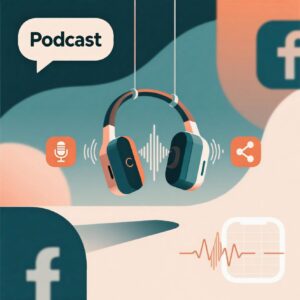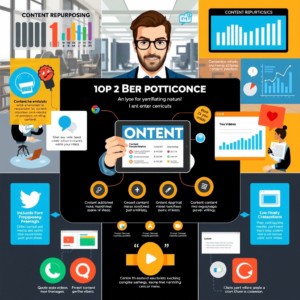That’s not just wishful thinking — with the right social listening tools , it’s entirely possible. In today’s fast-paced digital world, staying ahead of trends isn’t just a competitive advantage; it’s a necessity. Whether you’re running a business, managing a brand, or simply trying to keep up with your niche, social media is buzzing with insights that can guide your decisions and strategies.
This article will walk you through how social listening tools can help you stay ahead of trends, understand audience behavior, monitor competitors, and make smarter marketing moves. We’ll explore what these tools are, how they work, and why they’re essential for anyone serious about growth in the digital age.
By the end, you’ll have a clear understanding of how to use social listening to your advantage — and maybe even spot the next trend before it breaks.
What Exactly Are Social Listening Tools?
Before we dive deeper, let’s clarify: what are social listening tools?
In simple terms, they are platforms that track and analyze conversations happening across social media networks, forums, blogs, and news sites. Unlike basic social monitoring, which focuses on mentions of your brand or products, social listening takes a broader approach. It looks at trends, sentiments, keywords, and overall conversations related to your industry, audience, or competitors.
These tools collect data from platforms like Twitter, Facebook, Instagram, LinkedIn, Reddit, YouTube , and more. They then use algorithms and AI to identify patterns, sentiment shifts, and emerging topics. The result? Actionable insights that can inform marketing strategies, product development, customer service improvements, and more.
For example, imagine a beverage company using social listening to detect rising interest in plant-based drinks months before the trend hits mainstream headlines. That early insight allows them to develop and market new products faster than their competitors.
So, whether you’re a small business owner or part of a large marketing team, understanding what people are saying — and how they feel about certain topics — can give you a powerful edge.
Why Staying Ahead of Trends Matters Today
In an era where consumer preferences change rapidly , being reactive isn’t enough. Brands that wait for trends to fully emerge often miss the boat — or worse, appear outdated. This is where proactive strategy becomes key , and that’s exactly what social listening enables.
Trends don’t always start on the front page of Google or in traditional media. Often, they begin in niche communities, on forums, or among micro-influencers. If you’re only paying attention when something goes viral, you’re already behind.
Social listening tools help you catch these signals early. For instance:
- A sudden spike in negative comments about a competitor’s product might indicate a pain point your audience is experiencing.
- An increase in discussions around sustainability could signal a shift in consumer values.
- A growing hashtag or slang term might reveal a new way to connect with younger audiences.
By identifying these changes early, businesses can adapt messaging, launch timely campaigns, or pivot strategies before the competition does.
Moreover, staying ahead of trends isn’t just about sales or marketing . It also strengthens customer relationships. When a brand shows awareness of current issues, values, or interests, it builds trust and loyalty.
In short, social listening isn’t just a tool — it’s a mindset shift toward being data-driven and audience-focused .
Key Benefits of Using Social Listening Tools
Now that we’ve covered what social listening tools do and why staying ahead of trends matters, let’s look at some of the real-world benefits these tools offer.
1. Understand Your Audience Better
Social listening gives you direct access to what your audience is talking about — including their opinions, frustrations, and desires. This helps you create content, products, and services that truly resonate with them.
2. Monitor Brand Reputation
Knowing what people say about your brand in real time allows you to address concerns quickly, celebrate positive feedback, and build stronger relationships with your audience.
3. Track Competitor Activity
See what people are saying about your competitors. Are there features customers love? Complaints they frequently mention? These insights can inform your own positioning and innovation efforts.
4. Discover Emerging Trends
Stay ahead by identifying new topics, hashtags, or conversations gaining traction in your industry. This can inspire content ideas, product launches, or partnerships.
5. Improve Customer Service
Quickly identify and respond to customer complaints or questions mentioned online, even if they didn’t tag your brand directly.
6. Enhance Marketing Campaigns
Use real-time feedback to adjust ongoing campaigns, test messaging variations, and ensure your content aligns with current audience interests.
By leveraging these benefits, businesses can move from guessing what works to making informed, strategic decisions — all based on actual audience behavior.
How to Choose the Right Social Listening Tool
With so many options available, choosing the right social listening tool can feel overwhelming. But don’t worry — it doesn’t have to be.
Here are some key factors to consider when selecting a tool that fits your needs:
1. Define Your Goals
Are you looking to monitor brand mentions? Track competitors? Identify influencers? Knowing your objectives will help narrow down your choices.
2. Evaluate Platform Coverage
Make sure the tool covers the platforms where your audience is most active. Some tools specialize in Twitter, while others include Instagram, YouTube, Reddit, and beyond.
3. Check Sentiment Analysis Features
Advanced tools can automatically detect whether mentions are positive, neutral, or negative. This feature can save you hours of manual analysis.
4. onsider Real-Time Monitoring
If timing is critical (like crisis management or event tracking), choose a tool that offers real-time alerts and updates.
5. Look for Reporting Capabilities
The ability to generate visual reports is crucial for sharing insights with stakeholders or clients. Dashboards, graphs, and exportable data formats are important here.
6. Compare Pricing and Scalability
Some tools offer free versions with limited features, while others require monthly subscriptions. Think about your budget and whether the tool can grow with your business.
Popular tools include Brandwatch, Mention, Sprout Social, Hootsuite Insights, Meltwater , and Talkwalker , each with its own strengths depending on your needs.
Take your time to test out a few options — many offer free trials — and pick the one that best aligns with your goals.
Real-World Examples of Brands Using Social Listening Successfully
To show how impactful social listening can be, let’s look at a few real-life examples of brands that used these tools to stay ahead of trends and improve their strategies.
1. Netflix – Spotting Cultural Shifts
Netflix famously uses social listening to understand what viewers are discussing about their shows. For example, after noticing a surge in fan theories and memes around Stranger Things , they adjusted marketing strategies to highlight those aspects in future seasons. This helped maintain viewer excitement and engagement.
2. Glossier – Building Community Through Feedback
Glossier has built its entire brand around user-generated content and community interaction. By actively listening to what customers say on social media, they refine product offerings and create campaigns that reflect real user experiences.
3. Airbnb – Responding to Travel Trends
During the pandemic, Airbnb used social listening to detect a shift in travel preferences — from city stays to rural getaways. They quickly adapted their messaging and promoted countryside listings, aligning with changing consumer behavior.
4. Coca-Cola – Launching Trend-Driven Products
Coca-Cola used social listening to identify growing interest in low-sugar beverages. This led to the successful launch of Coca-Cola Zero Sugar, backed by targeted marketing based on real-time consumer conversations.
These examples prove that listening to your audience isn’t just helpful — it’s transformative . Brands that invest in social listening gain a competitive edge by making decisions based on real data, not assumptions.
Getting Started: Practical Steps to Implement Social Listening
Ready to start using social listening tools in your strategy? Here’s a step-by-step guide to help you get started:
Step 1: Define Your Objectives
Ask yourself: What do I want to achieve with social listening? Common goals include improving customer satisfaction, identifying new opportunities, or tracking brand reputation.
Step 2: Identify Relevant Keywords
Start by listing keywords related to your brand, products, industry, competitors, and target audience. Include variations, misspellings, and common hashtags.
Step 3: Choose the Right Tool
Based on your goals and budget, select a social listening tool that offers the features you need. Try a free trial first to see if it meets your expectations.
Step 4: Set Up Alerts and Dashboards
Configure real-time alerts for brand mentions, competitor activity, or trending topics. Create dashboards that display sentiment analysis, top mentions, and keyword trends.
Step 5: Analyze the Data
Don’t just collect data — make sense of it. Look for patterns, recurring themes, and sentiment shifts. Use this information to inform your marketing, product development, or customer support strategies.
Step 6: Take Action
The whole point of social listening is to act on insights. Whether it’s adjusting a campaign, responding to customer feedback, or launching a new product idea, make sure your findings lead to real outcomes.
Step 7: Review and Refine
Social listening is an ongoing process. Regularly review your strategy, update keywords, and refine your approach based on what’s working and what isn’t.
By following these steps, you’ll not only stay ahead of trends but also build a more responsive and customer-centric brand.
Final Thoughts: The Future of Social Listening
As technology continues to evolve, so too will the capabilities of social listening tools. With advancements in artificial intelligence, machine learning, and natural language processing , these platforms are becoming smarter, faster, and more accurate.
Imagine a future where:
- You receive predictive analytics showing which trends are likely to go viral.
- Your tool automatically suggests content ideas based on real-time audience interests.
- Sentiment analysis becomes so precise it can detect subtle emotional cues in user comments.
We’re already seeing glimpses of this future. Brands that embrace social listening now will be better positioned to thrive in this evolving landscape.
But remember: no tool replaces human insight. The power of social listening lies not just in the data it provides, but in how you interpret and act on that data.
So, whether you’re a marketer, entrepreneur, or content creator, the message is clear:
Listen to your audience, anticipate trends, and let data guide your decisions.
Because in the world of digital marketing, those who listen are the ones who lead.
Ready to Get Started?
If you haven’t already, now is the perfect time to explore social listening tools and integrate them into your strategy. Start small, experiment with different keywords, and gradually expand as you become more comfortable.
And if you found this article useful, feel free to share it with someone who might benefit from it. Got any thoughts or experiences with social listening tools? Drop them in the comments below — I’d love to hear from you!
Let’s stay ahead of the curve — together.




